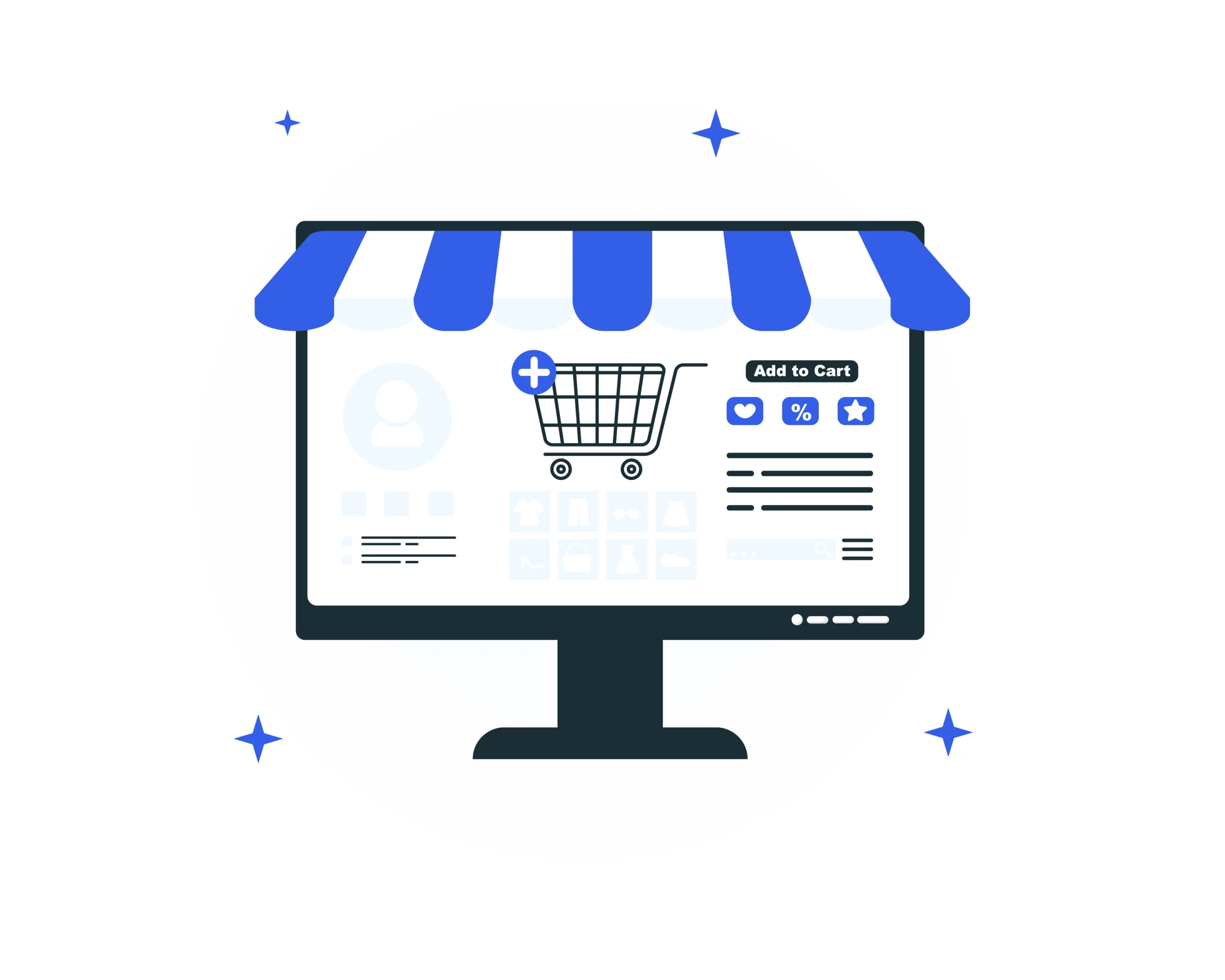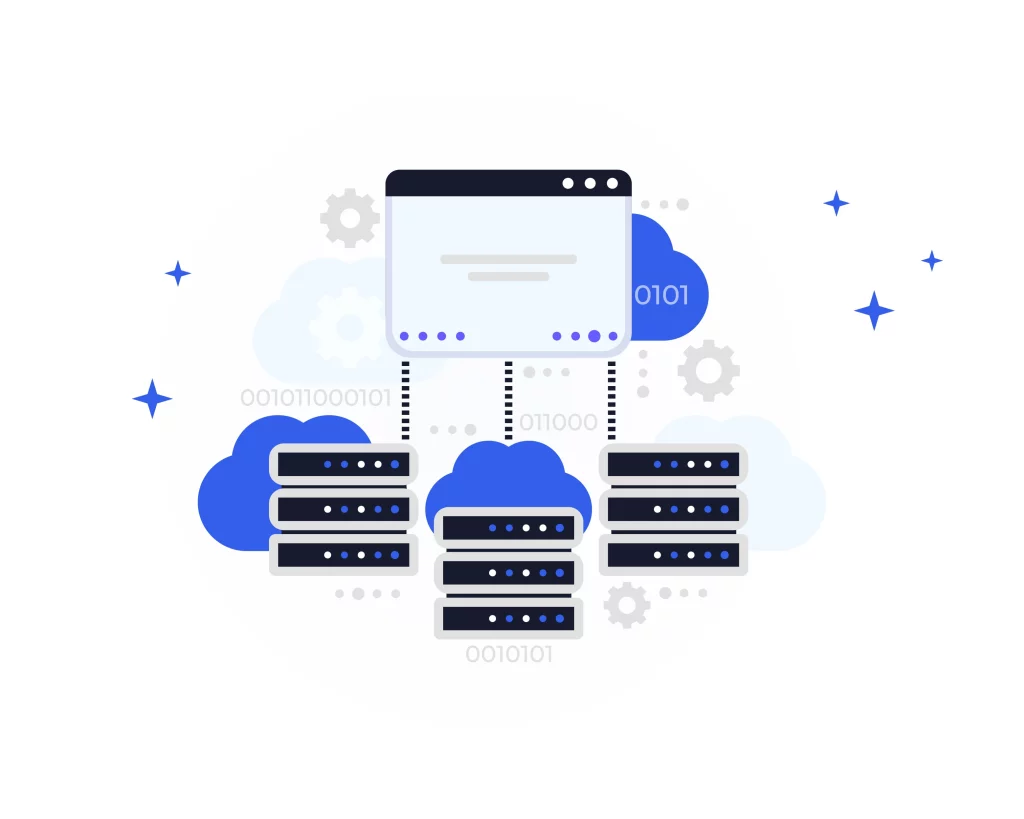Amazon Proxies: An Overview
Amazon proxies can be crucial in facilitating e-commerce operations on the Amazon platform. Let’s explore the definition and purpose of Amazon proxies, how they aid in e-commerce operations, and the benefits of using proxies for Amazon.
Definition and Purpose of Amazon Proxies
Amazon proxies are specialized proxy servers that allow users to access Amazon’s platform from different IP addresses. These proxies act as intermediaries between the user’s device and Amazon’s servers, providing a layer of anonymity and enabling users to browse, interact, and conduct transactions on Amazon with increased privacy and security.
The primary purpose of Amazon proxies is to mask the user’s original IP address and replace it with a different IP associated with the proxy server. This ensures that the user’s identity and location are hidden, making it difficult for Amazon to associate specific actions or behaviors with a particular user. This anonymity is top-notch for various e-commerce operations on Amazon.
How Amazon Proxies Facilitate E-commerce Operations
- Product Research: Amazon proxies allow e-commerce professionals and businesses to research products without revealing their identities. By accessing Amazon through proxies with different IP addresses, they can gather data, analyze competitors, and identify market trends without raising suspicion.
- Price Monitoring: E-commerce businesses often need to monitor the prices of their competitors’ products on Amazon. Proxies enable them to scrape pricing information from different regions without being blocked or detected. This data helps businesses adjust their pricing strategies and stay competitive.
- Account Management: Managing multiple Amazon seller accounts requires careful management to avoid account restrictions or bans. Amazon proxies can access and manage multiple accounts simultaneously, each with a unique IP address. This minimizes the risk of account suspension and ensures smooth operation.
- Review Generation: Positive product reviews are vital for building trust and driving sales on Amazon. With proxies, businesses can create multiple accounts and leave product reviews from different IP addresses. This approach maintains authenticity while expanding the reach of positive reviews.
Benefits of Using Proxies for Amazon
- Anonymity and Privacy: Amazon proxies provide anonymity by masking the user’s original IP address. Proxies protect personal information and browsing activities, ensuring privacy while conducting e-commerce operations on Amazon.
- Geolocation Targeting: Proxies with IP addresses from specific regions allow businesses to target local markets and tailor their marketing efforts accordingly. This enables them to create localized campaigns, set region-specific prices, and offer location-specific promotions.
- Competitive Edge: By utilizing proxies, businesses can monitor competitors’ pricing, product listings, and strategies on Amazon. This information helps them gain insights, identify opportunities, and adjust their strategy to gain a competitive edge.
- Smooth Operations: Proxies help prevent IP blocks, bans, or restrictions from Amazon. By rotating proxies and using diverse IP addresses, businesses can avoid detection and ensure smooth e-commerce operations without interruptions.
Types of Amazon Proxies
When it comes to using proxies for Amazon, there are different types available, each with its own features, advantages, and use cases. Let’s explore the three main types of Amazon proxies: residential proxies, datacenter proxies, and mobile proxies.
Residential Proxies
Features and Advantages:
- Residential proxies use IP addresses provided by Internet Service Providers (ISPs) to simulate real users. These proxies are highly reliable and offer a higher level of anonymity.
- They closely resemble the IP addresses of residential internet users, making them difficult to detect by Amazon’s security systems.
- Residential proxies rotate IP addresses, which helps prevent blocking and maintain a natural browsing pattern.
- These proxies provide a wide range of IP locations, allowing users to access Amazon from different regions.
Use Cases and Benefits for Amazon Sellers:
- Amazon sellers can use residential proxies to scrape product data, such as pricing information, from various Amazon marketplaces without being blocked.
- With residential proxies, sellers can manage multiple Amazon seller accounts and remain anonymous.
- Residential proxies are valuable for market research, enabling sellers to analyze competitor activities, track product rankings, and identify trends on Amazon.
- They also help sellers avoid IP blocks or restrictions when performing automated tasks like price monitoring, inventory management, and review generation.
Datacenter Proxies
Features and Advantages:
- Datacenter proxies are created from datacenter servers and offer a large pool of IP addresses.
- These proxies are generally faster and more affordable compared to residential proxies.
- Datacenter proxies provide high stability and reliability, making them suitable for high-volume scraping and automated tasks.
- They offer a wide range of IP locations across different regions.
Use Cases and Benefits for Amazon Sellers:
- Datacenter proxies are commonly used for Amazon product research, enabling sellers to gather large amounts of data quickly and efficiently.
- They help sellers automate various tasks, such as price tracking, inventory management, and competitor analysis, without facing IP blocks or detection.
- Datacenter proxies allow sellers to access Amazon from different regions, allowing them to simultaneously monitor prices, rankings, and trends across multiple marketplaces.
- These proxies are ideal for sellers who require speed and efficiency in their scraping and automation efforts.
Mobile Proxies
Features and Advantages:
- Mobile proxies route internet traffic through mobile devices or 4G connections, providing anonymity and reliability.
- They offer real mobile IP addresses, which closely mimic the browsing behavior of mobile users.
- Mobile proxies are less likely to be blocked or detected by Amazon’s security systems.
- These proxies provide various IP addresses from different mobile carriers and locations.
Use Cases and Benefits for Amazon Sellers:
- Mobile proxies are helpful for sellers who want to access Amazon through mobile devices, as they offer an authentic mobile browsing experience.
- They allow sellers to perform actions on Amazon that are typically associated with mobile users, such as leaving product reviews or engaging with the platform’s mobile version.
- Mobile proxies benefit sellers targeting specific geographic locations or demographics, as they provide IP addresses associated with mobile users in those regions.
- They enable sellers to bypass certain restrictions or blocks imposed on desktop or datacenter IP addresses.
Finding the Right Amazon Proxies
To ensure a smooth and effective experience with Amazon proxies, finding the right proxy provider and evaluating key factors are necessary. Here’s a guide to help you in your search:
Factors to Consider:
- Reliability: Look for proxy providers with a proven track record of delivering stable and uninterrupted proxy services.
- Anonymity and Security: Choose providers that offer secure and anonymous proxy connections, protecting your identity and data.
- Speed and Performance: Opt for providers that offer fast proxy connections to ensure smooth browsing and efficient operations on Amazon.
- Customer Support: Consider providers with responsive and knowledgeable customer support, as they can assist you in case of any issues or queries.
- Reviews and Reputation: Read reviews and feedback from other users to gauge the provider’s reputation and customer satisfaction.
Comparing Pricing and Features:
- Assess pricing plans and packages offered by different providers to find the one that aligns with your budget and requirements.
- Consider the number of concurrent connections and data transfer limits the proxy plans provide.
- Evaluate additional features such as IP rotation, session management, and API access that can enhance your proxy usage.
Evaluating Proxy Locations and IP Reputation
- Proxy Locations: Ensure that the proxy provider offers a wide range of proxy locations that match your target regions on Amazon. This allows you to access localized content and perform region-specific activities.
- IP Reputation: Check if the proxy provider’s IP addresses have a good reputation and are not associated with spamming or malicious activities. This helps prevent any issues related to blocked or flagged IPs by Amazon.
Ensuring Proxy Compatibility with Amazon’s Policies
- Terms of Service: Review Amazon’s terms of service and policies to understand any specific requirements or restrictions related to proxy usage. Ensure that the proxy provider’s services comply with Amazon’s guidelines.
- Proxy Configuration: Confirm if you can integrate the provider’s proxies into the software or tools you intend to use for Amazon operations. Check if they support HTTP/HTTPS protocols and provide clear instructions for proxy setup.
Setting Up and Configuring Amazon Proxies
Setting up proxies on Amazon involves a few simple steps. Follow this step-by-step guide to get your proxies configured and start using them on Amazon:
1. Registering for an Amazon Proxy Account
Begin by choosing a reputable proxy provider and registering for an account. Visit their website and sign up by providing the required information. Select a plan that suits your needs and proceed with the registration process.
2. Obtaining Proxy Server Information
Once you’ve successfully registered and subscribed to a proxy service, you will receive the necessary proxy server information. This typically includes the IP address, port number, and any authentication details such as username and password. Make sure to note down this information as you will need it in the following steps.
3. Configuring Proxies on Device
Setting Up Proxies on Windows
Begin by searching for “Proxy Settings” in the Windows search bar.
Open the search result labeled “Proxy Settings.”
In the settings window, you will be presented with two options: Automatic proxy setup and Manual proxy setup.
If you want Windows to automatically detect your proxy settings, select the first option.
Choose the second option if you prefer to use a specific IP address and port number.
Automatic Proxy Setup
- Enable the “Automatically detect settings”
- Turn on the “Use setup script”
- Enter the script address
- Finally, click “Save” to save the settings
Manual Proxy Setup
- Turn on the “Use a proxy server”
- Enter both the server address and port number
- If you have any addresses that you would like to visit without using a proxy, enter them in the designated field
- Enable the “Don’t use the proxy server for local addresses” checkbox to access a local server without a proxy
- Once done, click “Save” to save the settings
Setting Up Proxies on Mac
- Click on the Apple Icon located in the top-left corner of the screen.
- From the drop-down menu, select “System Preferences.”
- In the System Preferences window, click on “Network.”
- Within the Network settings, click on the “Advanced” button.
Note: Ensure that your device is connected to a Wi-Fi network before proceeding.
- In the Advanced settings window, select the “Proxies” tab.
- Choose the proxy IP protocol based on the protocols offered by your proxy service provider.
- Enable the “Secure Web Proxy” option.
- Enter the Proxy Server Address and Port Number provided by your proxy service provider.
- Click “OK” to save the proxy configurations.
Note: You may be prompted to enter your Mac user password to finalize and save the settings.
Setting Up Proxies on Mobile Devices
Amazon automatically copies your phone’s proxy settings whenever you access the platform. By configuring the proxy settings on your mobile device, you can enjoy secure browsing on Amazon.
iPhone
- Start by going to your iPhone’s settings and locating the “Wi-Fi” option.
- From the list of available Wi-Fi networks, choose the one you are currently connected to.
- Within the Wi-Fi settings for the selected network, locate the “Configure Proxy”
- Depending on your preferences and requirements, you can choose between “Auto” or “Manual.” Use the “Auto” option to detect your proxy settings automatically. If you know the exact IP address and port number you want to use, choose the “Manual” option.
Note: When you choose the “Auto” option for proxy settings on your iPhone, the device immediately checks whether a proxy server is required for the current network. If your iPhone determines a proxy server is unnecessary, it will not utilize one. However, if you still wish to use a proxy server, get an automatic proxy configuration script or .PAC file, and type it in the URL section. You can obtain this from your proxy service provider or network administrator.
If you choose the “Manual” option, follow these steps:
- Fill in the server address or IP address.
- Enter the port number.
- If your proxy provider mandates authentication for the proxy server, enable this option.
- Provide your authentication details.
Here’s what each field means:
Server Field: Refers to the IP address or domain name of the proxy server you wish to utilize.
Port Field: This is the specific port number the proxy server utilizes to accept incoming connections.
Authentication: This field is optional and should only be completed if your proxy provider requires authentication. It requires you to input your username and password.
Android
- Open the Settings app.
- Tap on “Mobile Network.”
- Tap on “Access Point Names” or “APNs.”
- Tap on the APN you wish to change the proxy settings for.
- Enter the proxy server’s address and port in the “Proxy” and “Port” fields.
- Tap the menu button.
- Select “Save” to save your settings.
4. Testing the Proxy Connection
After configuring the proxy settings, it’s essential to test the connection to ensure everything is set up correctly. Open the Amazon app or website and try accessing your Amazon account. If the proxy connection is successful, you should be able to browse and use Amazon as usual. To verify that your IP address has changed, you can use online tools or visit a website like “whatismyip.com” to check your new IP address.
Enhancing E-commerce Success with Amazon Proxies
Amazon proxies are crucial in enhancing e-commerce success by providing various benefits that contribute to increased account security, efficient account management, and access to global markets. Let’s explore how Amazon proxies can enhance your e-commerce success:
Increasing Account Security and Protecting Sensitive Data
- Anonymity and Privacy: Amazon proxies help maintain the anonymity of your online activities, protecting your sensitive data and preventing it from being linked directly to your actual IP address.
- IP Rotation: With proxy rotation, you can regularly switch IP addresses, making it challenging for Amazon to associate your activities with a single account or IP, thus enhancing account security.
- Protection Against Bans and Suspensions: By using proxies, you reduce the risk of getting banned or suspended on Amazon due to IP-related violations or suspicious activities.
Managing Multiple Amazon Seller Accounts Efficiently
- Account Separation: Proxies enable you to assign different IP addresses to each Amazon seller account, allowing you to manage multiple accounts simultaneously without raising any red flags.
- Avoiding IP Linkage: Using proxies ensures that your multiple accounts are not linked together based on IP addresses, reducing the risk of suspension or detection by Amazon’s security systems.
- Efficient Account Switching: Proxies facilitate seamless switching between Amazon seller accounts, enabling you to access each account without logging in and out repeatedly.
Overcoming Geographical Restrictions and Accessing Global Markets
- Geolocation Targeting: Amazon proxies provide the ability to choose IP addresses from different locations, allowing you to access and target specific geographic markets effectively.
- Regional Content Access: With proxies, you can access region-specific content on Amazon marketplaces, enabling you to analyze market trends, pricing variations, and customer preferences in different regions.
- Market Expansion: By utilizing proxies to access global markets, you can expand your e-commerce business internationally, tapping into new customer bases and increasing your sales potential.
Best Practices for Amazon Proxies
When using Amazon proxies, it’s important to follow best practices to ensure optimal performance, maintain compliance with Amazon’s policies, and maximize the benefits of proxy usage. Here are some recommended practices:
Rotating Proxies for Improved Scraping and Monitoring
- Proxy Rotation: Implement a proxy rotation mechanism to switch IP addresses periodically. This helps prevent detection by Amazon’s monitoring systems and ensures more reliable and efficient data scraping from Amazon’s platform.
- Scraping Limits: Respect Amazon’s scraping limits to avoid restrictions or penalties. Configure your scraping tools or software to comply with Amazon’s guidelines and prevent excessive requests that could raise suspicion.
Avoiding Suspicious Activities and Maintaining Compliance
- Account Limitations: Adhere to Amazon’s guidelines regarding the number of accounts and activities allowed per individual or organization. Avoid creating or managing an excessive number of accounts, as it can raise flags and lead to account suspension.
- Authentication and Credentials: Use valid and authorized credentials for all your Amazon accounts. Avoid sharing account information or using unauthorized third-party tools that may violate Amazon’s policies.
- Ethical Practices: Conduct your e-commerce operations on Amazon ethically and competently. Avoid any activities deemed fraudulent, manipulative, or against Amazon’s terms of service.
Monitoring Proxy Performance and Optimizing Settings
- Proxy Reliability: Regularly monitor the performance and reliability of your proxy connections. Ensure that your proxies provide stable and fast connections to prevent disruptions in your Amazon operations.
- IP Reputation: Monitor the reputation of your proxy IP addresses to prevent using IPs associated with spamming, blacklisting, or other malicious activities. Use reputable proxy providers to minimize the risk of using compromised IPs.
- Proxy Configuration: Optimize the proxy settings in your scraping or automation tools to ensure seamless integration with the Amazon platform. Adjust timeouts, connection limits, and other parameters based on your requirements.
Summary: Unleashing the Potential of Amazon Proxies
Amazon proxies offer numerous benefits and applications for e-commerce sellers, providing them with enhanced security, efficient account management, and access to global markets. Let’s recap the key benefits and takeaways of using Amazon proxies effectively:
- Increased Account Security: Amazon proxies protect sensitive data, ensure anonymity, and reduce the risk of bans or suspensions.
- Efficient Account Management: Proxies allow for managing multiple Amazon seller accounts seamlessly, avoiding IP linkages and facilitating account switching.
- Access to Global Markets: By leveraging proxies, sellers can overcome geographical restrictions, target specific regions, and expand their business internationally.
- Improved Scraping and Monitoring: Proxy rotation enhances data scraping efficiency while adhering to scraping limits ensures compliance with Amazon’s guidelines.
- Maintaining Compliance: Following ethical practices, respecting account limitations, and using authorized credentials help maintain compliance with Amazon’s policies.
Key Takeaways for Implementing Effective Proxy Strategies on Amazon
- Research Reputable Proxy Providers: Consider reliability, security, speed, customer support, and reviews when selecting a proxy provider for Amazon.
- Evaluate Proxy Locations and IP Reputation: Ensure proxy locations match your target regions and verify that the provider’s IP addresses have a good reputation.
- Ensure Proxy Compatibility: Confirm that the proxies can be easily integrated with Amazon’s platform and comply with its policies.
- Implement Proxy Rotation: Regularly rotate proxies to prevent detection and optimize scraping and monitoring activities.
- Follow Amazon’s Guidelines: Adhere to Amazon’s terms of service, respect scraping limits, and conduct ethical and compliant e-commerce operations.
- Monitor Proxy Performance: Continuously assess proxy reliability and IP reputation, and adjust proxy settings for optimal performance.
By harnessing the potential of Amazon proxies and implementing effective proxy strategies, e-commerce sellers can enhance their account security, efficiently manage multiple accounts, overcome geographical restrictions, and unlock opportunities for global market expansion on the Amazon platform.









